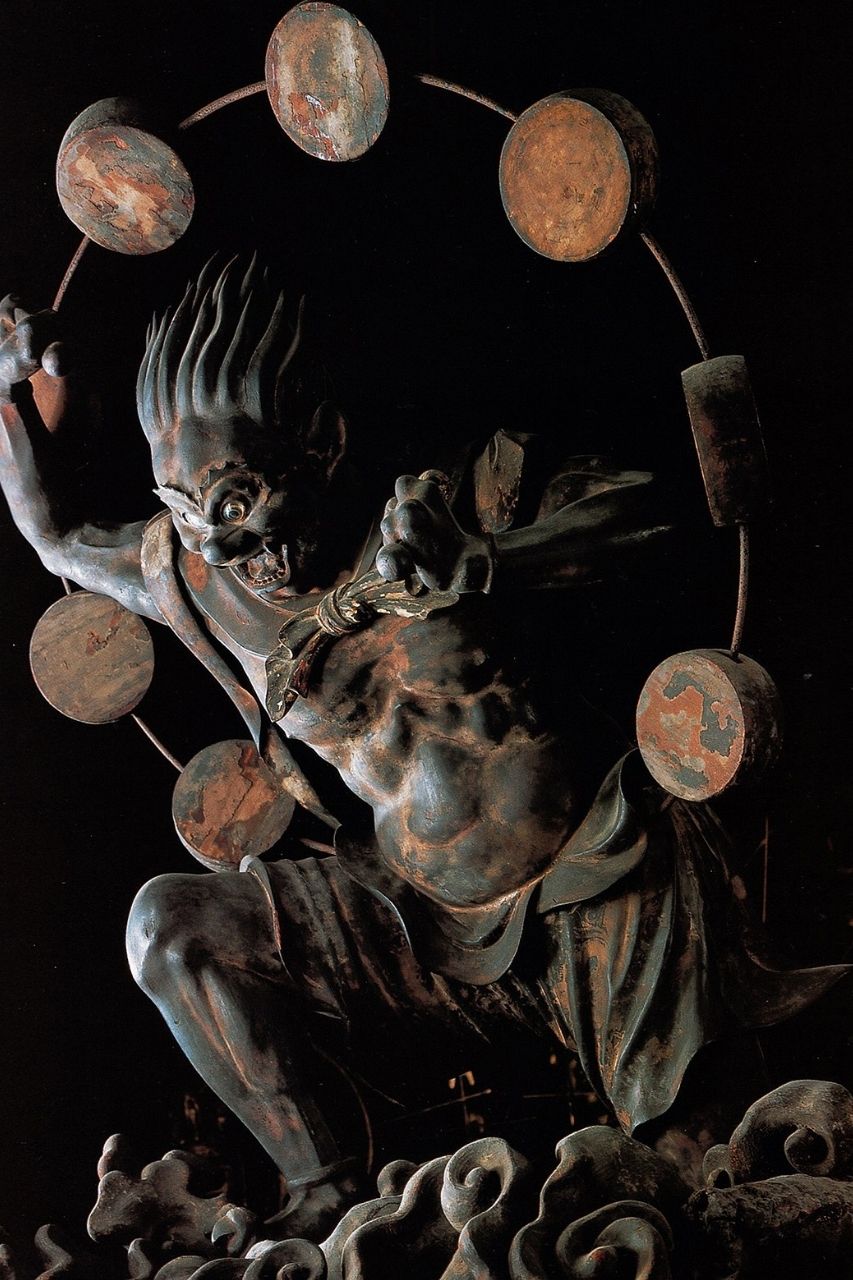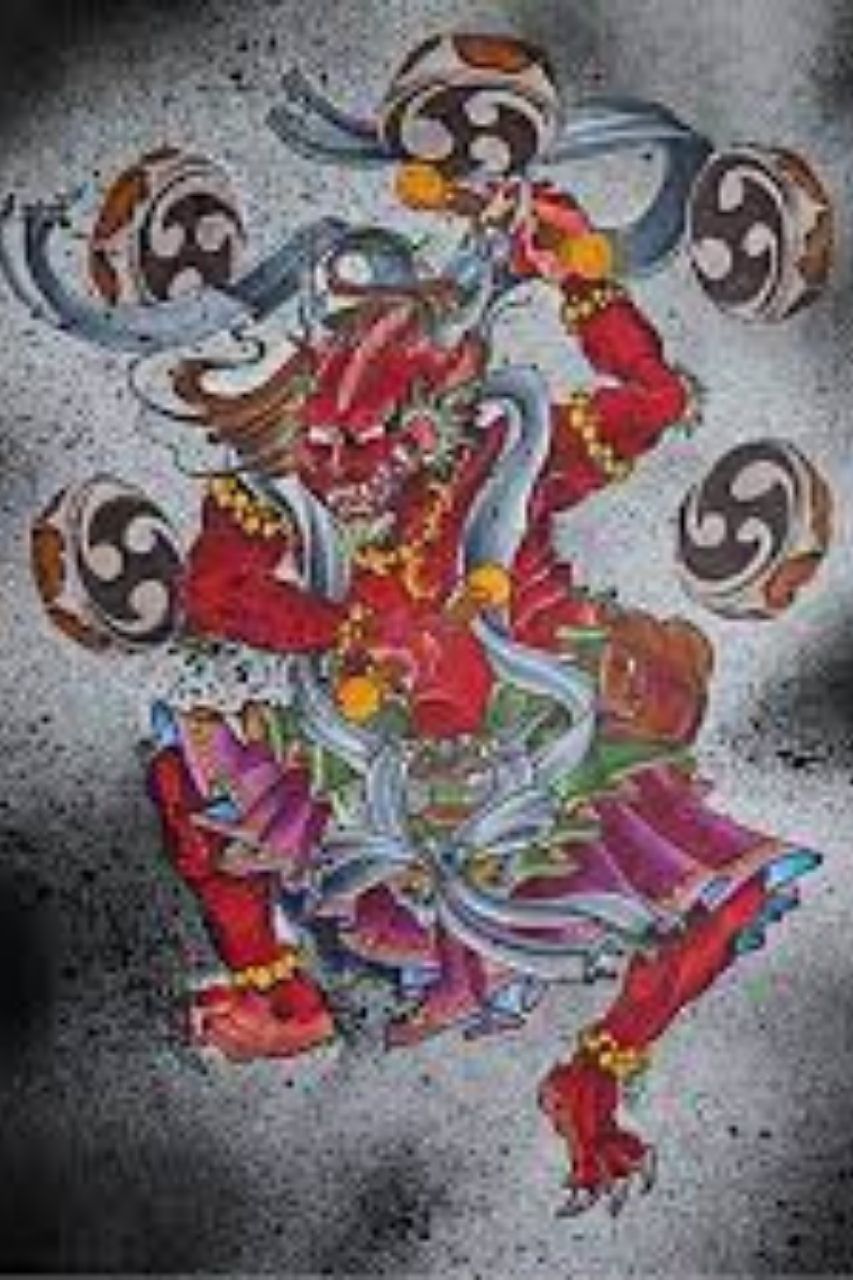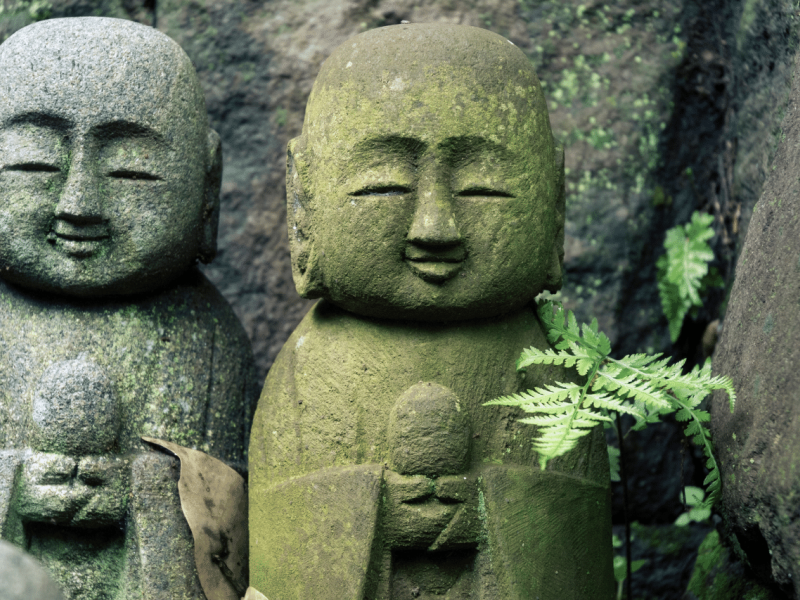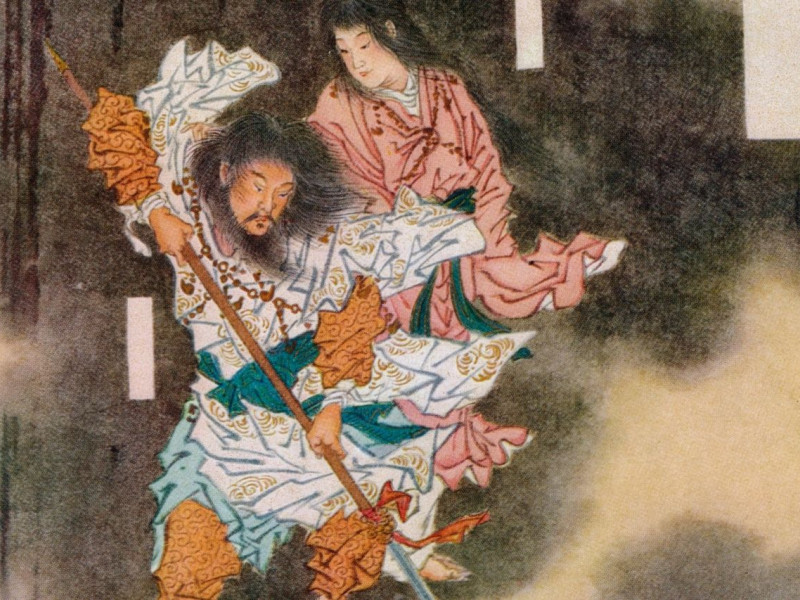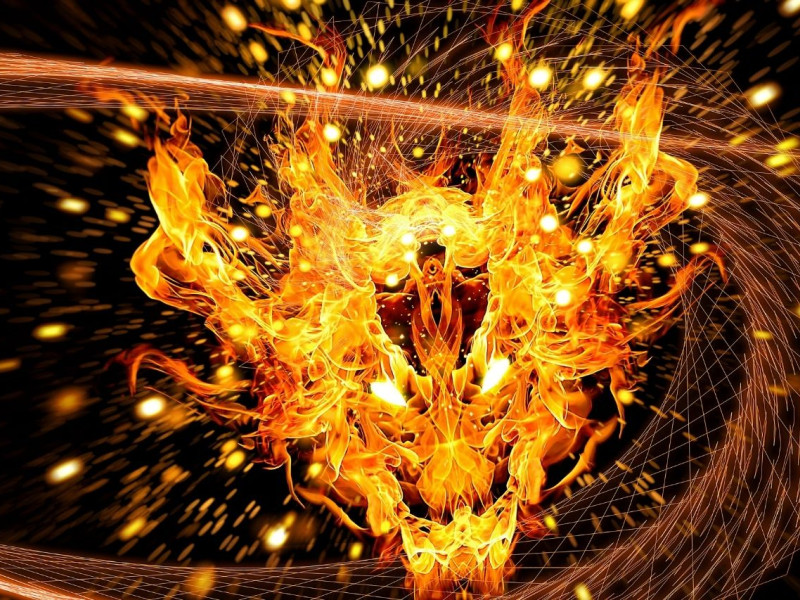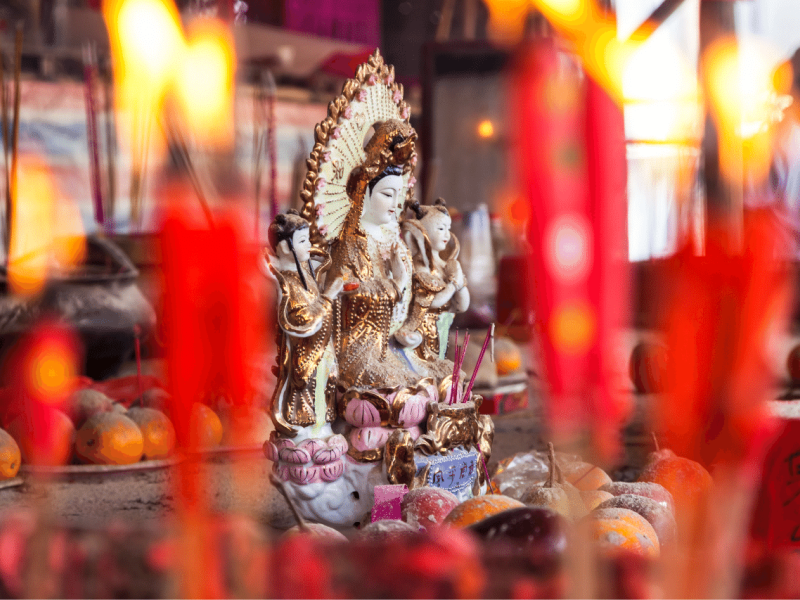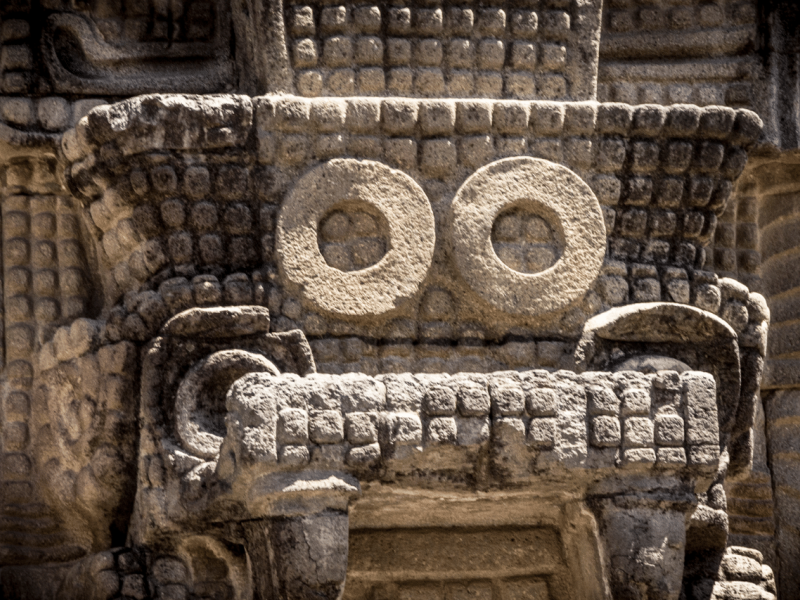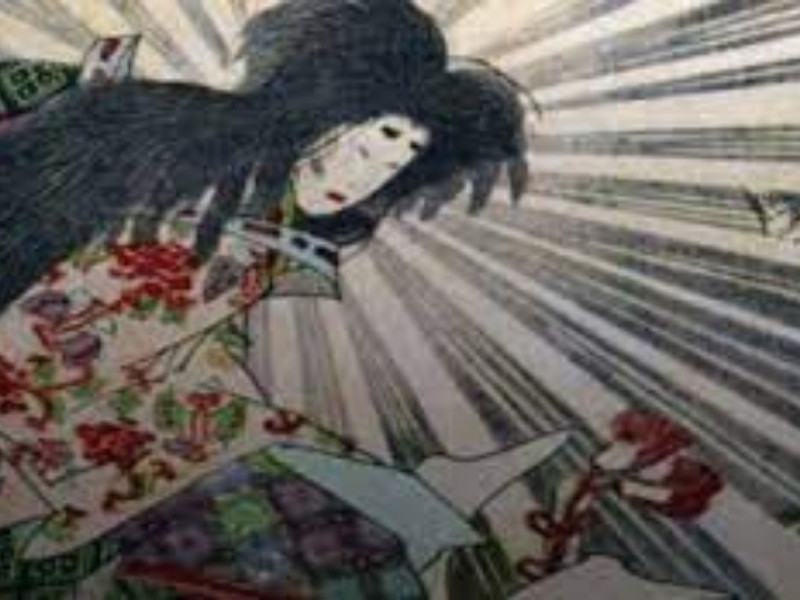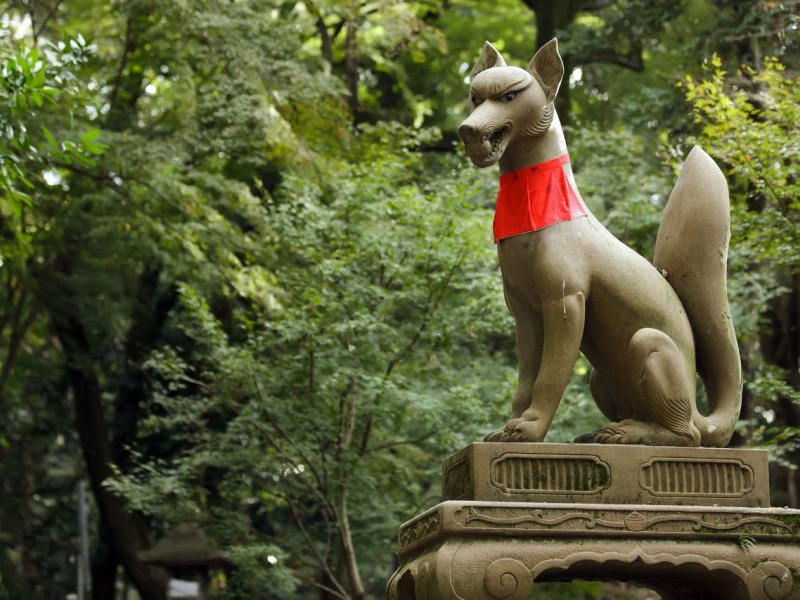Raijin
Raijin: Fear the Chaotic Japanese God of Lightning
Raijin is the fearsome god of thunder in Japanese mythology. Raijin has power over thunder, lightning, storms, and rain. He has a great connection to death, and even though he brought rain, he would leave destruction behind. Read on to find out just how fearsome this god was.
Who Is Raijin in Japanese Mythology?
Raijin is the Japanese god of lightning and thunder, and his brother Fujin is the god of the wind. Together, they wielded wild, chaotic storms. Raijin could fly across the sky on storm clouds, and he would shoot down lightning bolts at anyone he pleased. He was a very well-known god, but he had a terrifying appearance, and people weren’t always sure where they stood with him.
Raijin was part of the Shinto group of deities, but he was also seen in Buddhist tales as well as in artwork. Just by looking at Raijin, one can tell that he had a connection to Yomi, the Land of the Dead. He wore a crazed smile, thick, dark eyebrows, and was covered in muscle, as well as wild hair. He looks almost demon-like in his appearance.
Raijin had many powers like using a drum to make thunder, protecting temples and shrines, and using lightning and rain to create harvests. He was a trickster god and used his powers to do what he liked. He didn’t listen to humans in power on earth, but he was subject to other gods in the pantheon. Raijin has a few fascinating tales to tell, especially how he came about.
Origins and Family of Raijin
Raijin was one of the children born to Izanagi and Izanami, two of the Japanese creator gods. However, Izanami died from wounds from giving birth to a fire dragon, and Raijin was born while she was dead in Yomi. Because of that, he was different from his siblings Amaterasu, Tsukuyomi, and Susanoo. According to one folktale, he had a deep connection to the underworld, and it was a matter of great bitterness to the god.
Later, Raijin had a son named Raitoro. Raitoro himself was also a thunder god.
Other Epithets of Raijin
Raijin had several names he went by, including:
Raiden-sama or “Lord Thunder and Lightning”
Narukami or “The Resounding God”
Kaminari-sama or “Lord Thunder”
Yakusa no ikazuchi no kami or “God of Storms and Disaster”
Myths of Raijin, God of Thunder
Raijin appears in a couple of myths and folktales. He was credited for a few famous storms in Japanese history as well. He was beloved by those who lived their life by rain, such as farmers, but perhaps feared by others.
The Birth of Raijin, continued
After Izanami’s death, her husband Izanagi came after her in the Land of the Dead to bring her back to the living. When he got there, he saw that she looked normal, but when he shone a light on her, he could see maggots eating her flesh. In horror, he raced out of Yomi, and he put a boulder at the entrance to Yomi to keep her from escaping.
Izanami was furious, even in her dead state. She had Raijin while still dead, and she ordered her son to chase after his father. He left Yomi, and he brought with him all the death and chaos and destruction that was in the land of the dead.
Imprisonment of Raijin
During times of drought, the ancient Japanese people would think that the god of thunder had been imprisoned and unable to do his job. At one point in mythology, Raijin was being so bad that Sugaru the God-Catcher caught him and put him in prison. While in prison, Sugaru asked Raijin in the name of the emperor to give himself over to his imprisonment willingly. Raijin laughed and said no.
And then, Sugaru asked the Buddha of Compassion to help convince Raijin to be taken to the emperor. Raijin eventually agreed. After that, Raijin was commanded to stop being so chaotic and destructive and only to bring rain to Japan. He did so, but it didn’t last forever.
Other Tales
Some stories state that Raijin and Fujin worked together in 1274 and 1281 to bring out typhoons. These typhoons sunk the Mongol ships and prevented invasion on Japanese soil.
Some folktales say Raijin doesn’t like children who show their belly buttons. He takes them and eats them. An explanation might be that he’s jealous of humans and their natural births. He was born to a rotting corpse in the underworld.
Another tale states that if one of Raijin’s lightning bolts struck a crop, a bountiful harvest would follow.
Raijin’s Connection to Other Gods
Mythologies are not in a vacuum. Many across the world have various similarities between their gods and goddesses. Raijin is no exception. This god of thunder and lightning has similarities to:
The Greek Zeus who wielded lightning bolts and cared about his own pleasure
The Norse god Thor who held the power of thunder and lightning in his hands
Parjanya, who was the Hindu god of storms
El, a Hebrew god of storms
And Leigong, the Chinese god of thunder
Raijin in Artwork
Because he was such a well-known and famous god, he had much artwork representing him. But his most renowned representation is in Kyoto at a Buddhist temple called Sanjusangen-do. Statues of both Raijin and his brother, Fujin, guard the entrance to the temple. These statues are some of the most beloved in Japanese artwork.
And this representation is a perfect example of Raijin protecting temples and shrines.
Raijin in Pop Culture
Raijin has appeared in various media:
“Pom Poko”, an anime film
Manga series “Naruto”
“Mortal Kombat” video game
Final Fantasy VIII
Conclusion
Take a look at the main points covered in the article from above:
Raijin is the fearsome god of thunder in Japanese mythology. He had the power over thunder, lightning, rain, and storms
His brother, Fujin, with whom he was often featured in art, was the god of the wind
They were constantly working together and shown together in artwork
Raijin was sort of like a trickster god who would do whatever he pleased with his powers
He didn’t listen to humans such as monks or priests, or emperors. But he was subject to the other deities in the Japanese pantheon
He could fly across dark storm clouds over the sky. He would throw down lightning bolts on anyone he felt deserved them
Raijin had a terrifying appearance: crazed smile, wild hair, thick, unruly eyebrows, and he had a demon-like look.
He had many powers. He would use a drum to create the sound of thunder and protect shrines and temples. And he used his skills with rain and lightning to create a bountiful harvest
He was part of the Shinto deities, but he was also pictured in Buddhist folklore and art
Raijin had an interesting start because he was born from a corpse. He was the son of the Japanese creator gods Izanami and Izanagi
Her mother, Izanami, died because of the fire breath of a dragon. Saddened, his father Izanagi raced to Yomi, the land of the dead, to try to bring her back
But when he got there, he saw it was too late; she was already a rotting corpse. Izanagi left the underworld, and he put a boulder in the entrance to keep her from escaping
Raijin was born to her after she was inside and rotting away. She ordered her son to race after his father and entered the world of the living
He did, and he brought with him all the death, chaos, and destruction that had resided in Yomi
During times of drought, people would believe that Raijin was imprisoned and unable to let the rain fall
In one story, Sugaru the God-Catcher took Raijin and begged him to give himself over to the emperor because he was so destructive
Raijin said no, but then Sugaru got the Buddha of Compassion to beg Raijin and Raijin agreed to go to the emperor
So, for a time, Raijin was imprisoned and only allowed to let helpful rain fall
Some stories state that in 1274 and 1281, Raijin and Fujin were responsible for the typhoons that sank Mongol ships. They intended to invade Japan
Other accounts mention that Raijin kidnapped and ate children who showed their belly buttons
He was jealous of their natural birth since he was born in the underworld
He also could create a bountiful harvest, not just by rain but also by striking a crop with a lightning bolt
His most famous artistic representation is a statue along with his brother, guarding the entrance to a Buddhist temple in Kyoto
Raijin had similarities to other gods: Zeus, Thor, Leigong, and more
He appears in various media such as popular video games
Like other thunder gods, Raijin was powerful and fearsome, but unlike others, he also brought an aura of death with him. He might be more like some Aztec gods where people weren’t always sure where they stood. He might provide life-giving rain one day and then death-giving lightning and storms the next. While this made him interesting, it also made him terrifying, and that exactly, we can assume, was his intention.
